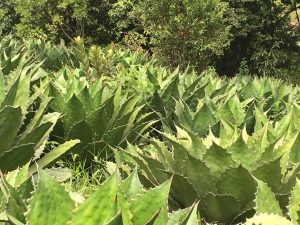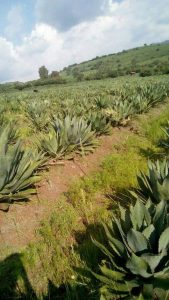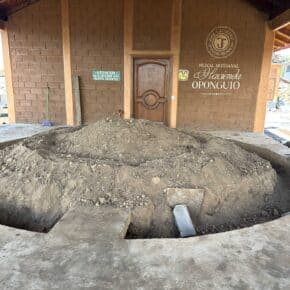Learning about agave varieties is fun but complex. Particularly outside of Oaxaca where the regions have less resources and it is a slower process to officially distinguish and classify agave species, the communities rely on internal knowledge. One of the most fascinating trends in mezcal right now is the deepening connection between the scientific and academic world with the mezcal world. On my recent trip to Michoacan a biologist and her two students accompanied us to the nature preserve where the agaves for Don Mateo come from, and we all learned from each other. This merging of communities that have generations of wisdom of these agaves and the scientists who have a deep theoretical knowledge is strengthening the classification system for agaves.
The two main varieties in Michoacan are CUPREATA and INAEQUIDENS, and account for the majority of the mezcal production. In addition there is Manso de Sahuayo, formerly known as cenizo; cultivated blue agave, espadin, and espadilla.
Cupreata

Cupreata features a particularly alluring shape. Broad and crimped leaves have deep imprints and curvy spines, calling to mind the beautiful curves of the human form. Many of us agave heads find beauty in the shapes and colors of agave generally, and cupreata seems to be nature’s best effort to seduce us with a visual love poem.
This variety grows at an elevation of about 12-1800 meters above sea level, most commonly found on mountain slopes. It reaches maturity after no less than 8 years, often times growing as long as 15 years before being harvested for mezcal production. The main style of reproduction is through seed, and it is currently found in the wild as well as being cultivated and semi-cultivated.
Cupreata is the scientific name of the agave, and the most common colloquial name for this variety is ‘chino’ because of the curly or crimped appearance of the leaves. As the main variety of Michoacan, it accounts for the vast majority of the production from the state, as well as being used in Guerrero for mezcal production.
Inaequidens

Inaequidens has a similar shape to cupreata, with leaves slightly less curly and spines that are not as curvaceous or as even. It’s scientific name, inaequidens, actually means ‘uneven teeth’ and is in reference to the irregular pattern of spines. Also called by the common name ‘alto’ it can be a particularly large agave in the wild, and the tall appearance can help distinguish it from the relatively more squat cupreata.
This variety is found alongside cupreata in the higher elevation areas of around 1500+ meters above sea level. The reproduction is primarily through seed, and while much of the current production relies on wild agaves, it is also being cultivated and semi-cultivated. This variety will take around 15 years to reach full maturity. In addition to Michoacan, it can be found in Morelos, Colima and Jalisco.












great article, Im looking for an expert farming or botanist consultant to guide me in maguey production farming. Going to start growing and want some plant braniacs, who do I turn to??? Any help would be appreciated.
Kevin
Kevin – where are you based?